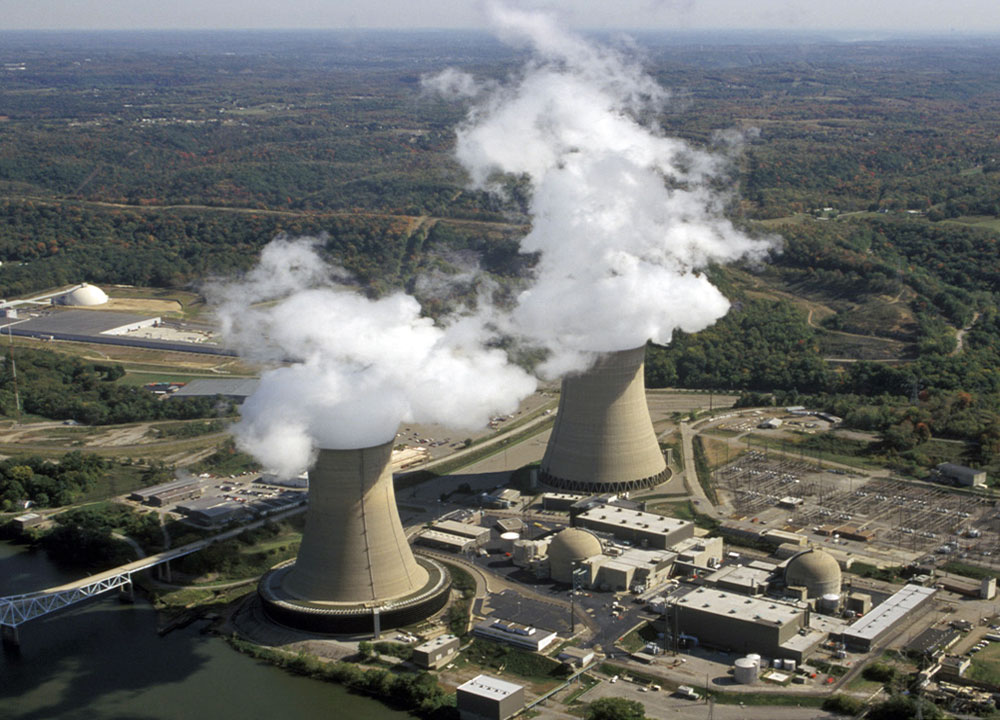The USGS Water Science School
Here is the Beaver Valley Nuclear Power Station in Pennsylvania. What stands out are the huge towers–cooling towers. Generating power is a hot business and the equipment used in producing power gets very hot ... and must be cooled off to keep it working. Lots of water is used to cool electricity-generating equipment, with the water often coming from nearby rivers or lakes.
You know that water is often used to cool things off (the chemistry behind that is complicated), and in the case of hot equipment at power plants, the water used to cool the equipment essentially "grabs" the heat from the equipment, resulting in very hot water. So, the power plant ends up with hot water that cannot be dumped back into the river or lake without harming the local ecology. Cooling towers like these use evaporation to cool the used water before releasing it back into the environment.
The hot water is sprayed inside these large towers and the water cools as it evaporates in the air. And the "clouds" you see? Those are like any other clouds, in that the very moist air rises and meets cooler air, resulting in condensation and clouds.

Credit: U.S. Nuclear Regulatory Commission